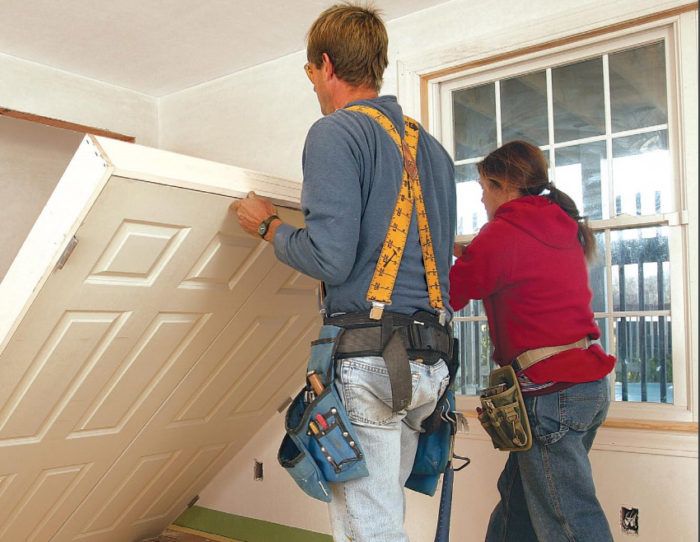Double Doors Are Twice As Tricky
Prehung double doors demand galvanized nails, a good eye for gaps, and as little moving around as possible.

Synopsis: Installing prehung double doors can be a pain, but Rhode Island builder John Spier has come up with a methodical system for getting them in place with as little trouble as possible. By using galvanized nails, shims, a level, a keen eye, and a minimal amount of movement, Spier is able to get doors in place and working smoothly in almost no time.
Prehung double doors are a pain. These doors come from the manufacturer bristling with temporary bracing and nails to hold them together, but once this bracing is removed, moving the doors without damaging them is difficult. I don’t think anybody should specify prehung double doors wider than 4 ft., but nobody listens to me. i’m often faced with 5-ft. or even 6-ft. doubles, so I’ve learned some tricks for getting them hung and adjusted without wasting too much time.
Galvanized nails allow for adjustments
Although most doors are set plumb in their rough openings with cedar shims and are fastened securely with a 15-ga. air nailer, I change things up a little bit when it comes to prehung double doors. Because these doors usually require a lot more adjustment to get the right fit, I use 10d or 12d galvanized finish nails to tack the jamb legs in place, relying on their friction against the wood to provide an adjustable fit.
One of the most-frustrating things about double doors is that after the gaps are all perfect, the bottoms of the doors usually are still misaligned, one in front of the other. Galvanized finish nails bend just enough to allow me to move all four corners of the jamb in or out slightly until the doors are in plane. In extreme cases, i might need to pull one and renail it, but it’s still more convenient than digging out a flush-driven pneumatic nail.
Shim placement matters
When it comes time to back up the galvanized nails with additional permanent shims, I start by snugging up the loose shims behind the upper hinges, then adding a pair of shims just below the bottom hinges. Finally, I add a set just above each middle hinge.
I never put shims directly behind the hinges because they’re a lot harder to cut off there, especially if the door opening is close to an adjacent wall. Also, the hinge screws often come through the back side of the jambs just enough to interfere with the shims. I never shim the head jamb because all buildings move, all headers settle, and an unnecessary top shim just invites a jammed door later. The casings hold the head jamb straight.
Double Doors Are Twice As Tricky
Level, But Don’t Plumb
Before I start, I lay down a few pieces of cardboard in front of the opening to protect the door and the floor. Then I lay the door on the floor, hinge side down, and remove all the temporary bracing.
Nail Guns Aren’t Always The Best Option
I use five strategically located 10d or 12d finish nails to tack the jambs in place; galvanized nails work best because their coarse shanks provide more friction against the wood. This allows me to adjust the door jambs with a flat bar.
Lose The Level; It’s All Visual From Here
Again using a flat bar, I can pull the bottoms of the side jambs away from the jack studs until the doors fit. I do one side first, using the space between the door and the top jamb as a guide.
To see step by step photos of Spier put in prehung double doors, click the View PDF button below.










